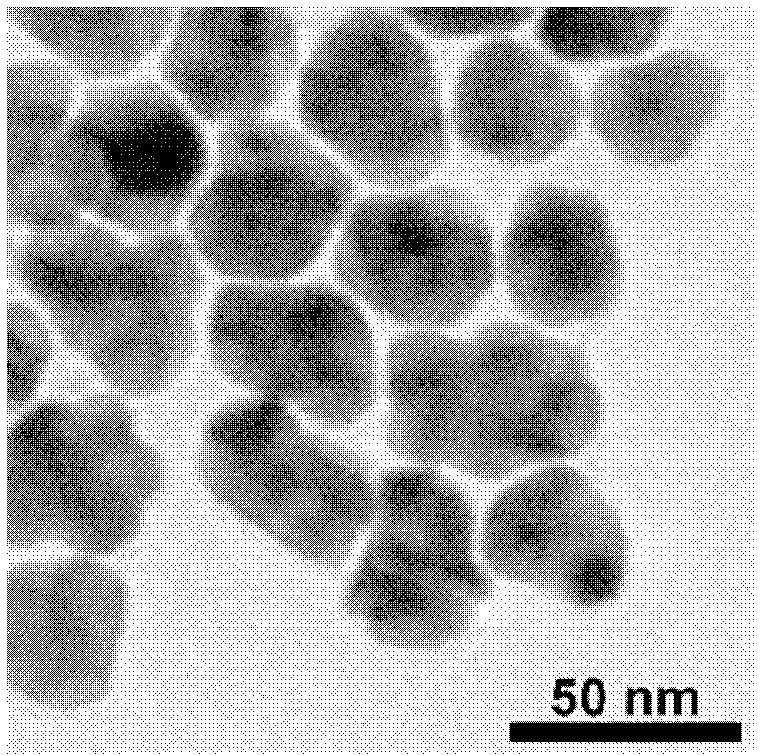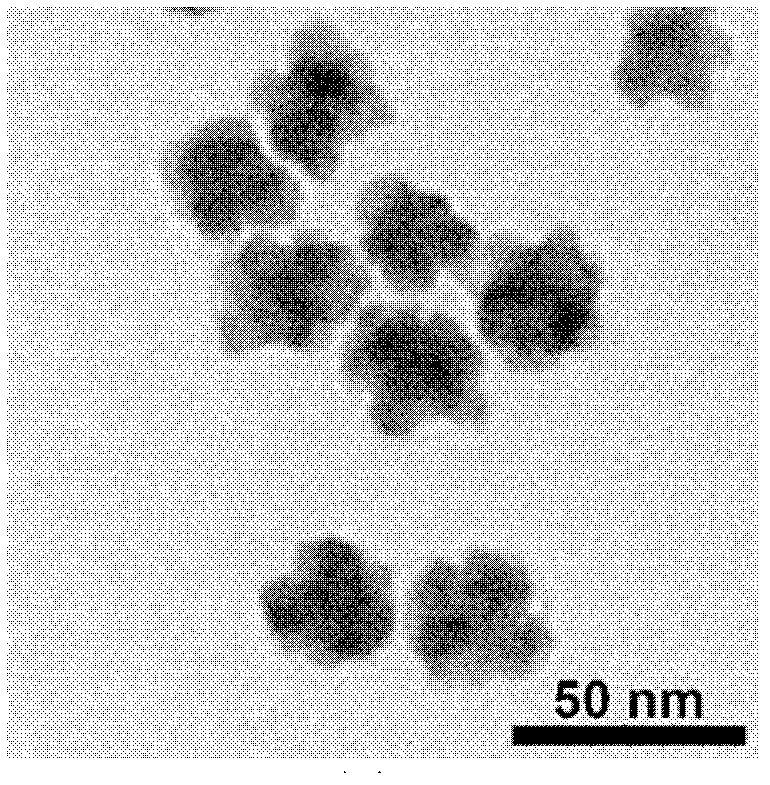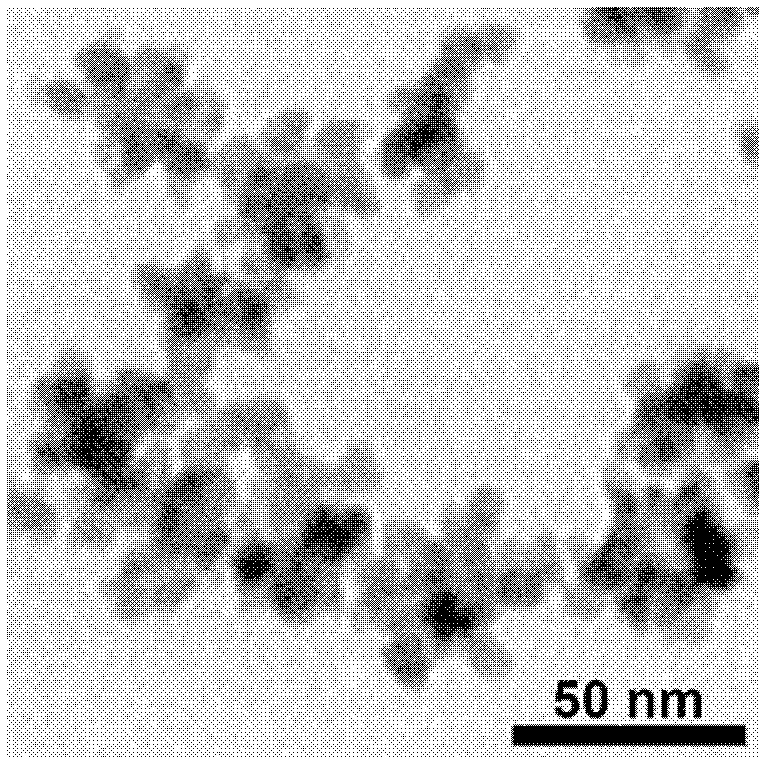Method for preparing multi-metal nanoparticles by one-step coreduction
A multi-metal and nanoparticle technology, applied in nanotechnology and other directions, can solve problems such as inability to large-scale production, harsh and complex experimental conditions, application limitations, etc., to achieve good experimental repeatability, simple and fast experimental operation.
- Summary
- Abstract
- Description
- Claims
- Application Information
AI Technical Summary
Problems solved by technology
Method used
Image
Examples
Embodiment 1
[0020] 0.0648mL concentration of 0.04g / mL of HAuCl 4 solution and 0.0625 mL of H at a concentration of 0.04 g / mL 2 PdCl 6 The solution was dissolved in 50mL deionized water, and the total concentration of metal ions was 2.5×10 -4 mol / L, HAuCl 4 with H 2 PdCl 6 The molar ratio between them is 1:1, the reaction system is stirred and heated to 100° C. to boil the solution to obtain a tan transparent solution. Then, 1 mL of 2 wt % sodium citrate solution was added to the reaction system. After keeping the solution boiling for 10 minutes, stop heating and continue stirring to cool to room temperature, such as figure 1 As shown, the spherical-like Au / Pd binary metal nanoparticles with an average particle diameter of 34.4nm were obtained.
Embodiment 2
[0022] 0.0648mL concentration of 0.04g / mL of HAuCl 4 solution and 0.0625 mL of H at a concentration of 0.04 g / mL 2 PdCl 6 The solution was dissolved in 50mL deionized water, and the total concentration of metal ions was 2.5×10 -4 mol / L, HAuCl 4 with H 2 PdCl 6 The molar ratio between them is 1:1, the reaction system is stirred and heated to 100° C. to boil the solution to obtain a tan transparent solution. Then, 3 mL of sodium citrate solution with a concentration of 2 wt % was added to the reaction system. After keeping the solution boiling for 10 minutes, stop heating and continue stirring to cool to room temperature, such as figure 2 As shown, flower-shaped Au / Pd binary metal nanoparticles with an average particle diameter of 28.6 nm were obtained.
Embodiment 3
[0024] 0.0648mL concentration of 0.04g / mL of HAuCl 4 solution and 0.0625 mL of H at a concentration of 0.04 g / mL 2 PdCl 6 The solution was dissolved in 50mL deionized water, and the total concentration of metal ions was 2.5×10 -4 mol / L, HAuCl 4 with H 2 PdCl 6 The molar ratio between them is 1:1, the reaction system is stirred and heated to 100° C. to boil the solution to obtain a tan transparent solution. Then, 4 mL of 2 wt % sodium citrate solution was added to the reaction system. After keeping the solution boiling for 10 minutes, stop heating and stir to cool to room temperature, such as image 3 As shown, dendritic Au / Pd binary metal nanoparticles were obtained.
PUM
| Property | Measurement | Unit |
|---|---|---|
| The average particle size | aaaaa | aaaaa |
| The average particle size | aaaaa | aaaaa |
| The average particle size | aaaaa | aaaaa |
Abstract
Description
Claims
Application Information
 Login to View More
Login to View More - R&D
- Intellectual Property
- Life Sciences
- Materials
- Tech Scout
- Unparalleled Data Quality
- Higher Quality Content
- 60% Fewer Hallucinations
Browse by: Latest US Patents, China's latest patents, Technical Efficacy Thesaurus, Application Domain, Technology Topic, Popular Technical Reports.
© 2025 PatSnap. All rights reserved.Legal|Privacy policy|Modern Slavery Act Transparency Statement|Sitemap|About US| Contact US: help@patsnap.com



